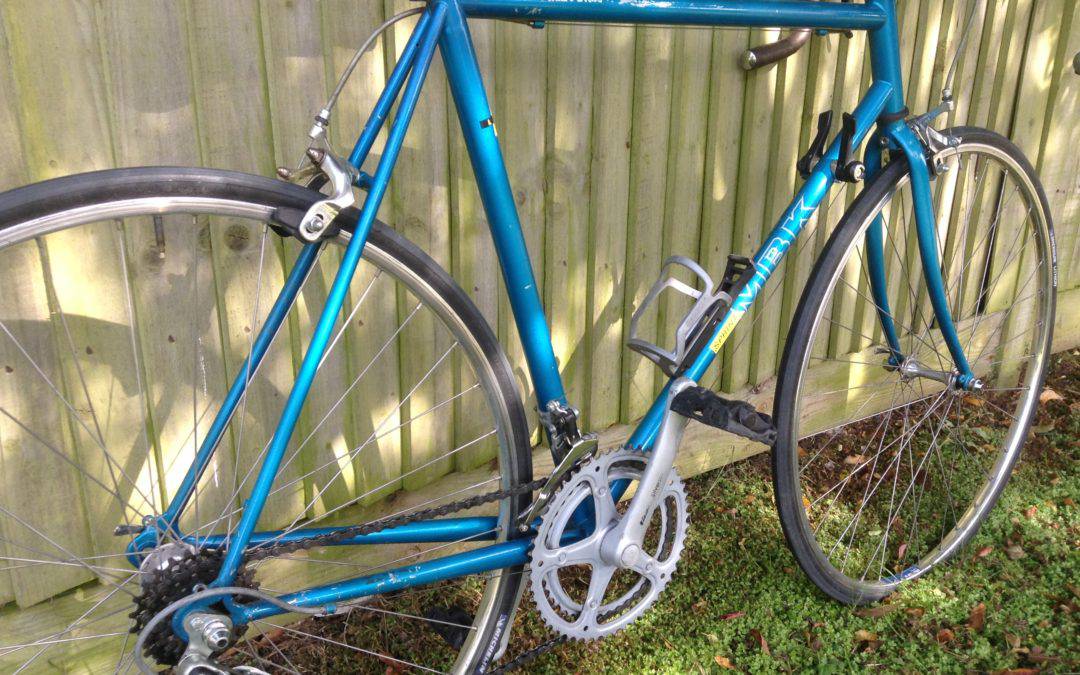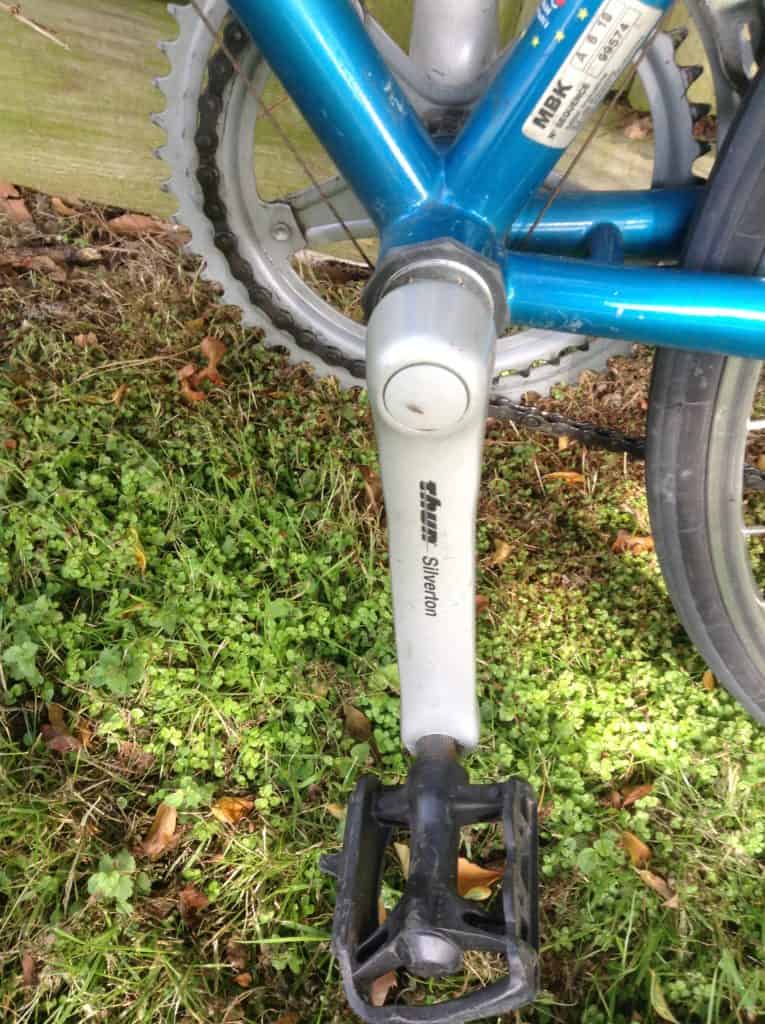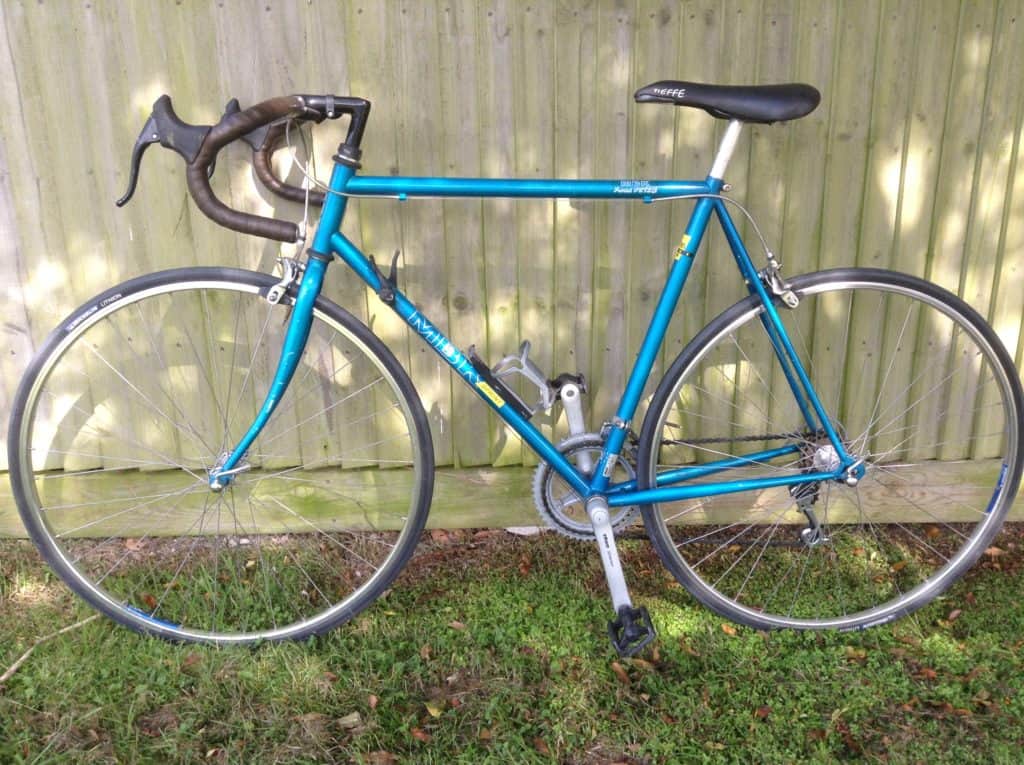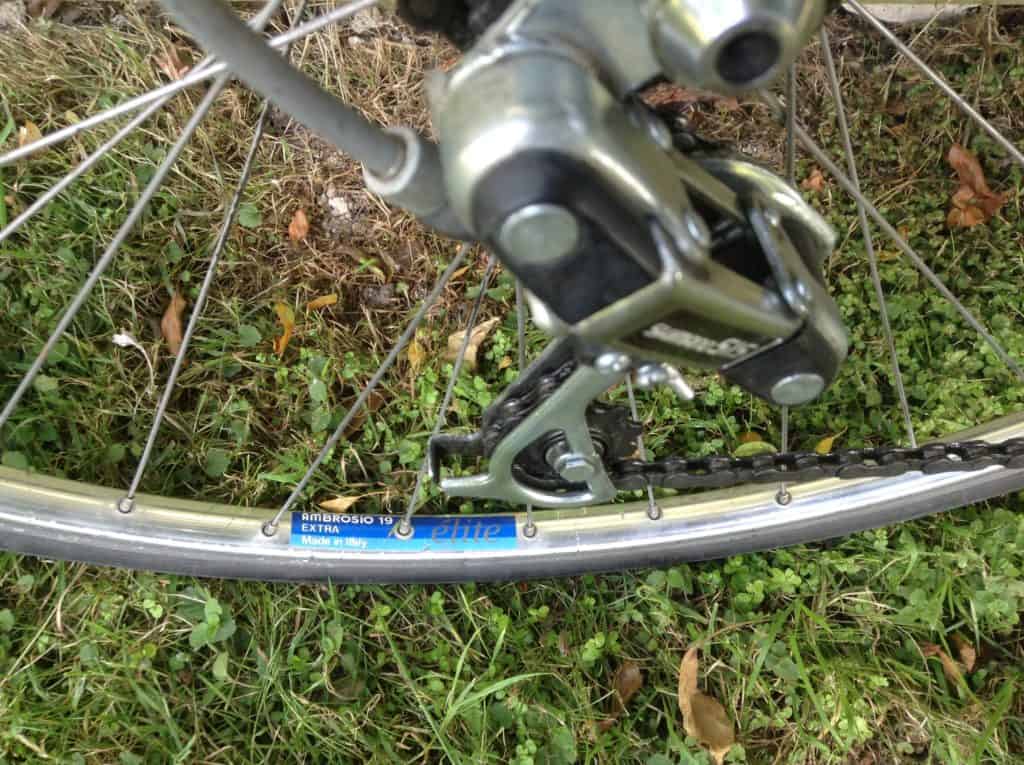Fall of the Giants
Motobecane shares a similar history to Britain’s Raleigh brand, and sadly both companies no longer produce bikes in their respective countries. Both Motobecane and Raleigh became behemoths in the cycle industry throughout the 20th century, mass producing a great variety of two wheeled machines and exporting them en masse across the globe. Both also began as humble, family-owned workshops, and similarly dedicated their factories for the war effort after 1939. Eventually, both companies filed for bankruptcy and were sold to foreign owners in the 1980’s, their brand names now being used by the huge Taiwanese corporation, Kinesis.
1924 – 1984
It was 1984 when the last Motobecane branded bike rolled out of the factory in Saint Quentin. Like Raleigh in 1987, Motobecane was to be bought out by an overseas corporation, which shut down the French factories and moved all production to Taiwan. In 1984 they decided to rename the brand MBK, which retained at least some remnant of the French name and at the same time provided some provenance to the new company’s identity. French-built models like the C5 and the Team Champion were now confined to history; gone forever were the handmade frames built for Tour De France races.
1984
MBK bikes are an example of what happens when a company is bought out and it’s new owner is solely intent on making money. Have you ever heard anyone speaking admiringly about MBK? I very much doubt it. The bikes that they produced from 1984 were epitome of functionality and cost-effectiveness; cheap-looking frames, uncompromisingly basic parts and a range of bikes that would leave you as inspired as a damp lettuce. No longer is there a serial number stamped onto the frame; instead, on the downtube, is a sticker with a “number sequence”.
The Hideous Crankset
Whoever would have wanted a crankset such as this on their bike? It’s a piece of garbage. It doesn’t even have any chainrings bolts, because it’s a one piece hunk of aluminium. It’s so ugly, so, so, ugly. Perhaps it’s the ugliest crank ever made, in the history of world. It is also especially useless: it can’t be taken apart and cleaned, so I hate it more than any other component I’ve ever come across.
The Era of the Unicrown
As for the frame, well, it’s quite a nice colour, and I really believe that it is better made than most modern aluminium frames. There are no ugly tig welds which are ubiquitous on most modern aluminium and steel tubes. The unicrown fork is not a misfit on this frame which has no lugs, but I still much prefer the traditional dual crowned fork on a steel bike. It reminds me of the early mountain bike phase of the mid to late 1980’s, on which were fitted these less ornamented and rudimentary forks.
Mix ‘n Match
I wonder how much of this bike is original and how many components have been swapped out. The rear derailleur, for example, has a long cage and is designed for a triple crankset, yet this bike was never an 18 speed. The saddle is Italian, the bars and stem are ITM, the rims are Ambrosio and the brake levers are French, being a pair of Saccon. It’s a bit of a mixed bag, but maybe that’s how MBK rolled back then. You get the feeling there was no interest in building the bike with a groupset, or with a homogenous set of parts. But then again, what could be expected of a bike firm like MBK in the early 1990’s?
Conclusion
This is an early 1990’s bike, like this one, but it doesn’t seem it. There are other examples of MBK Super sprints with better components, indexed shifting, Exage 300x derailleurs. You may even say that this bike has Columbus Gara tubes, and that it was a decent road bike in its day. Maybe. But this bike has a basic 6 speed wheelset, which could have been installed on a bike in the early 1980’s; it also has that crankset and a pair of low quality brake calipers. It’s decals are basic stickers, placed over the paint, which in many ways is a detail which sums up the whole. MBK never made a bike like the Motobecane C5.








Do you have ANY information on motobecane aldo racing bikes???? I have one I just got but, I cant seem to find any info on them. I love motobecanes and have a 79 mirage.
Hi, I’ve only ever seen one Motobecane bike with an Aldo decal, and I don’t know anything about the name, sorry. Was it a customised sticker of some sort, or the name of a shop which added its decal to the frame?
Have you any idea what threading the MBK super sport 12’s have? Praying it’s british not swiss 🙂
Bottom bracket threading that is…
Cheers
The Super Sport has standard ( British threading ), as it’s a post 1982 bike. Cheers.
I often post the classic Vandenbroucke pic of he on his MBK frame in Cofidis kit. Thx for the history. Had always assumed that it was a rebadged French frame but never pursued the history.
Thanks for the comment, the picture of Vandenbroucke is a great addition to the page! Cheers
You’re right, he Cofidis MBK bikes were indeed rebadged French frames. They were really Cyfac Starships, quite a marvelous ride (I had one).
Bought this from new, saving all my summer holiday money when doing A Levels. Best bike I owned.
Thanks for posting, that’s awesome! I wish I had bought a better bike when I was a teenager, I was riding a 5 speed Vitesse piece of junk for years. How I envied other kids with 10 speed Dawes and Raleigh racers, but no one I knew had a French bike.
Do anyone no about a mbk pro Line bike based on the vitus zx1?? I bout one in 92´ still have it
This chronology seems slightly wrong or incomplete. Motobecane was selling quality French-made bikes under the Motobecane name through 1984, as their catalogs clearly show. I own a 1984 “SP” (French equivalent to Team Champion) that is marked “Made in France” and came equipped with all TOTL French Spidel components. Around the same time a nearly identical French model was being produced in MBK livery. As for the San Quentin factory stopping production of bikes in 1981, is this really correct, and if so is it possible that quality models were still being made at the original Pantin factory near Paris?
I saw this dumped in a river near Limerick ( Ireland ). Two weeks later it was still there so I rescued it. It needs a bit of work but there’s something about it that I love. I’m hoping to do all the work myself and learn on the job
Thanks for posting, and saving that bike is what this website is all about, there’s something great about bringing abandoned bikes back from the junkyard. Good luck with your project, love the colour of that frame, by the way. Why not post a picture when you finish it? Cheers!
I just finished the mbk super sprint I fished out of the river in Kilmallock. I sprayed it as close to the original colour I could find on spray.bike but lacquered it with gold fleck. New handlebar wrap, saddle, brake levers, back wheel, freewheel cassette and tires and she’s good to go. It was my first time doing anything like this and it’s not perfect but it turned out better than I hoped or expected!
The finished mbk before and after
Great job, the bike looks superb! I like the new colour, traditional tan tyres, nice handlebar tape and all the cleaning it’s had to give it a new lease of life. Fantastic! Thanks for posting!
Here’s my 1981 Team Champion. The last of the thoroughbred Motobecane bikes out of Saint Quentin
That’s a beautiful bike, the colour is fantastic and it looks in great condition. Thanks for posting.
The erroneous statement that the last Motobecanes were produced at St. Quentin in 1981 seems to be metastasizing, showing up in search results, getting repeated here and elsewhere. The bike shown above is splendid but it is not the last of the breed. The full line was made through the 1984 model year. That catalog even shows the St. Quentin factory on the back cover. What happened in 1981 was the purchase of the company by Yamaha, who continued production of all models for another three years. The 1984 Team Champion (“SP” in France), the La Redoute team replica, featured a Columbus SL frame, Cinelli cast bottom bracket shell, Weinmann Carrera brakes, and and top-of-the-line Spidel components from Simplex and Stronglight. These bikes are well known and highly collectible. Please correct this chronology.
Corrected, thank you.